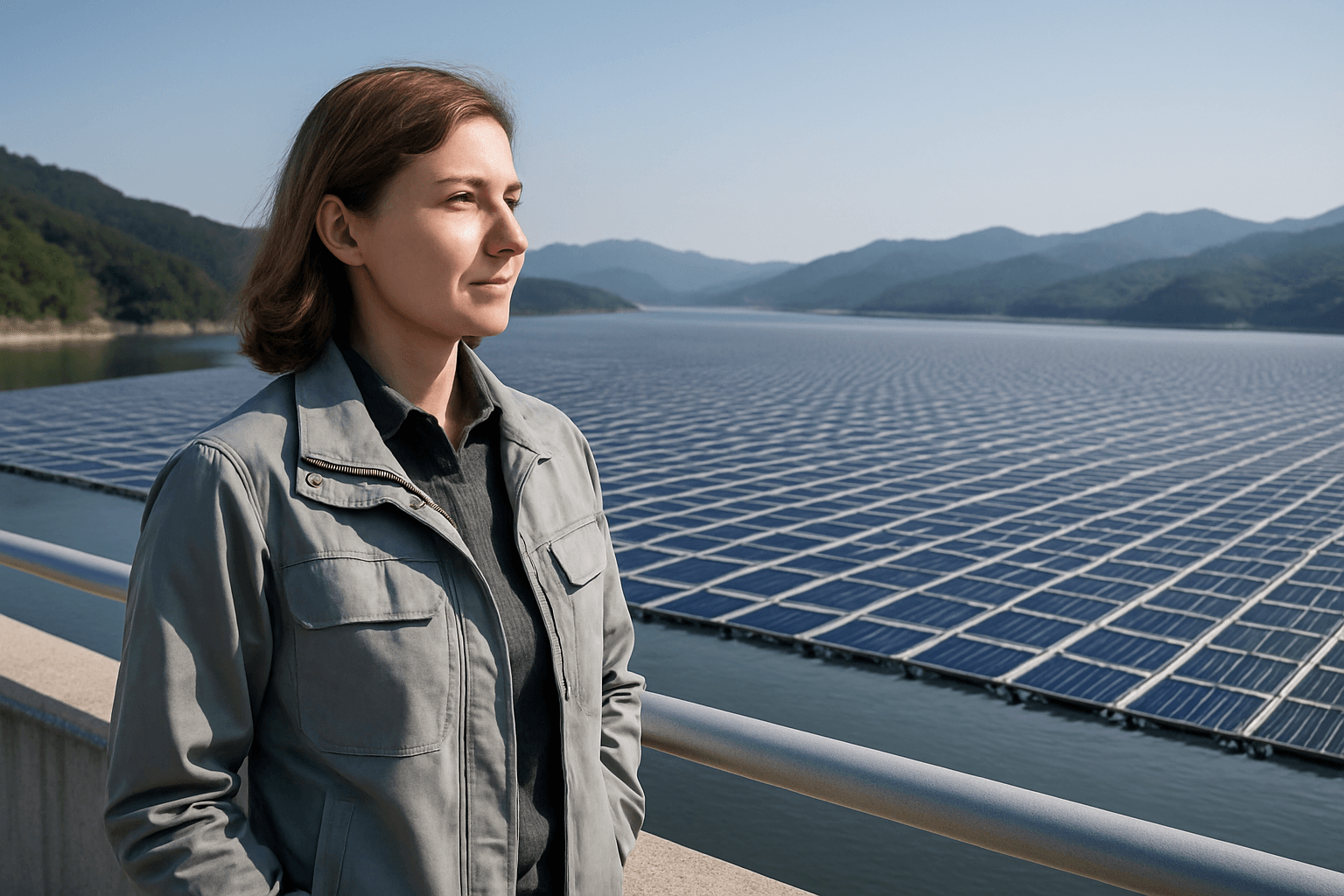South Korea has officially launched a significant 47 MW floating solar power project at the Imha Dam, located east of Andong in Gyeongsangbuk-do Province. The facility, which held its completion ceremony in late September, represents the country’s largest floating photovoltaic (PV) installation on a multipurpose dam, marking a substantial step in the nation’s renewable energy expansion.
A New Era of Hybrid Renewable Energy at Imha Dam
The newly operational 47 MW floating solar farm is strategically integrated with an existing 50 MW hydropower plant at Imha Dam, creating a sophisticated hybrid energy system. This innovative setup allows the complex to generate clean electricity consistently: the floating solar panels power the grid during daylight hours, while the hydropower plant seamlessly takes over overnight to maintain a steady output. This synergistic approach addresses one of the primary challenges of solar power intermittency, ensuring a more reliable and continuous supply of renewable energy. The project is a testament to South Korea’s commitment to leveraging its water resources for sustainable power generation, positioning the Imha Dam site as a pioneering example of integrated renewable energy infrastructure.
Architectural Design and Community Integration
Beyond its technical achievements, the Imha Dam floating solar project boasts unique design elements and a progressive community participation model. The installation comprises 16 interconnected floating structures, ingeniously arranged to form patterns inspired by two of South Korea’s most important national symbols: the Taegeukgi, the national flag, and the Mugunghwa, the national flower. This thoughtful design imbues the project with cultural significance, making it not just a power plant but also a large-scale piece of patriotic art.
Furthermore, the project incorporates a resident-participation model, often referred to as a “Sunlight Pension,” through which 33 local villages invested in the venture via a dedicated legal entity. This model ensures that approximately 4,500 people living within a one-kilometer radius of the dam are eligible to receive a direct share of the profits from the electricity produced over a 20-year period. This initiative is expected to return roughly KRW 22.2 billion (approximately $16 million USD) to the community, fostering local economic benefits and building strong public support for large-scale renewable projects. The hybrid plant is projected to generate about 61 GWh of electricity annually, enough to power approximately 22,000 households, covering around 27% of all households in Andong.
Key Players and Investment in Green Energy
The development of this significant floating solar facility was a collaborative effort involving several key entities. Korea Hydro & Nuclear Power (KHNP), Korea Water Resources Corporation, Gyeongsangbuk-do Province, and Andong City jointly oversaw the project. Top Solar served as the engineering, procurement, and construction (EPC) contractor, bringing the vision to fruition. Technical expertise for the floating platforms was provided by Scotra, a Seoul-based specialist in floating solar structures, while Korean manufacturer Shinsung E&G supplied the solar modules.
The total cost for the project amounted to approximately $50 million (or KRW 73.2 billion). This substantial investment underscores South Korea’s strategic focus on enhancing its renewable energy portfolio. The nation has been steadily increasing its solar energy capacity, adding about 2.5 GW of new solar last year and pushing its cumulative photovoltaic capacity to over 29.5 GW.
The Growing Trend of Floating Solar in South Korea
Floating solar power is gaining traction globally, particularly in densely populated countries like South Korea where land availability for large-scale ground-mounted solar farms is limited due to mass urban development and agricultural expansion. Deploying solar panels on water bodies such as dams, reservoirs, and lakes offers several advantages, including reduced land use, enhanced panel efficiency due to the cooling effect of water, and minimized water evaporation.
South Korea has been at the forefront of this trend, with several floating solar projects already operational, such as the Hapcheon Dam Floating Solar Power Project, which has been operational since 2021 with 41 MW capacity. While the Imha Dam project is notable for its size on a multipurpose dam, the country also has ambitious plans for even larger floating solar facilities, including the colossal Saemangeum Floating Solar Plant, expected to be the world’s largest, with a projected capacity of 2.1 GW. These projects demonstrate a clear national strategy to leverage available water surfaces for clean energy production.
Future Implications for Sustainable Development
The successful commissioning of the 47 MW Imha Dam floating solar project is more than just an addition to South Korea’s energy grid; it serves as a blueprint for future sustainable development. By combining renewable energy generation with cultural symbolism and direct community involvement, it showcases an integrated approach that can be replicated globally. The project exemplifies how innovative engineering, strategic partnerships, and a focus on local benefits can accelerate the transition to a greener, more sustainable energy future, aligning with South Korea’s broader goals of achieving significant renewable energy generation capacity in the coming decades.

